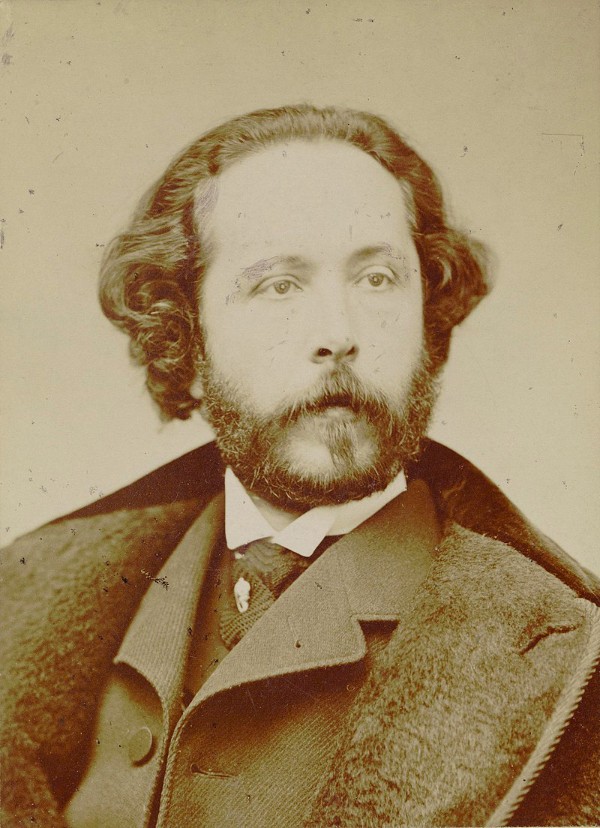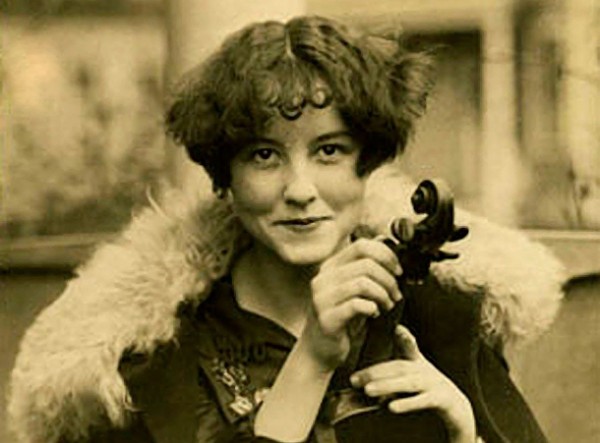We’ve noted many times the fascination the northern Europeans had with southern Europe: musical trips to Greece, Italy, and Spain seemed to be de rigeur in the 19th century if you were Scandinavian, German, or French.
French composer Édouard Lalo (1823-1892) was born in Lille; his father had been a member of Napoleon’s army. His fascination with Spain culminated in his Symphonie espagnole, Op. 21, which really isn’t a symphony, but is now considered a violin concerto. The use of Spanish motifs set the tone for the northern fascination with Spain, with Bizet’s Carmen, which had its premiere at the Opéra-Comique in Paris only a month after Lalo’s work.

Pierre Petit: Édouard Lalo, 1965 (Gallica: btv1b8421663h)
The work was written for the Spanish virtuoso violinist Pablo Sarasate and received its premiere in Paris on 7 December 1875.
Its five-movement structure and its symphony name caused many early 20th-century performers to drop the middle-movement Intermezzo and convert the work to a more standard 4-movement symphonic form. We’ll ignore the fact that most concertos only have 3 movements!
The fascination with Spain was part of a general fascination in Europe (northern Europe in particular) with exoticism – the sounds of India and the Middle East sparked composers’ imagination just as much as the wild Gypsy sound coming from Naples and Madrid. The Moorish occupation of Spain gave it a unique architecture, unique gardens, and access to an outdoor life unknown in the frozen north. Iberomania freed the more conservative northerners to write music full of life and sound, mysterious evening assignations, and to imagine beautiful women hidden behind their veils and mantillas, remaining visible but always inaccessible.
The first movement opens passionately, with strong statements in the orchestra followed by the violin. The singing first theme gives way to a ‘sultrier’ second theme. Sharp changes in dynamics emphasize the emotions of the movement. The violin skitters through unusual melodic passagework, but always with an emphasis on the excessive, be it of scalar movements or of emotion.
Édouard Lalo: Symphonie espagnole, Op. 21 – I. Allegro non troppo
This recording, with the Boston Symphony Orchestra under George Szell, was made in 1945 with Ruth Posselt as violin soloist.

Ruth Posselt
American violinist Ruth Posselt (1911–2007) was a frequent performer with the Boston Symphony and performed the premieres of several American violin concertos, including those by Vernon Duke (as Vladimir Dukelsky), Edward Burlingame Hill, Samuel Barber, and Aaron Copland. In 1941, she gave the New York premiere of Paul Hindemith’s Violin Concerto. She appeared with all the major symphony orchestras in the US and, from her debut at Carnegie Hall at age 11 to her last concert in the 1970s, she was a leading violinist of her time. Her career wasn’t just in the US; she also had a substantial European following, first with her recitals in the 1930s and then with her appearances as a concert artist. Her 1934–1935 tour of the Soviet Union was the first by an American woman violinist. The Boston Symphony Orchestra’s long-time conductor Serge Koussevitzky declared her to be one of the ‘greatest violinists of our time’.

Performed by
Ruth Posselt
George Szell
Orchestre Symphonique de Boston
Recorded in 1945
Official Website
For more of the best in classical music, sign up for our E-Newsletter
